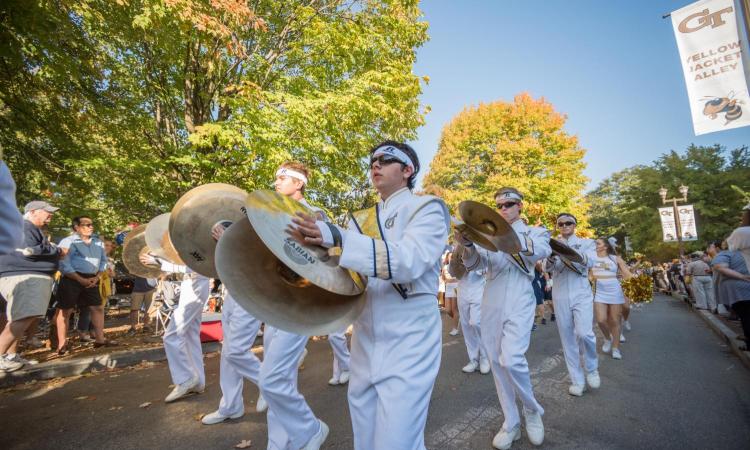Cards create clickable call-to-action blocks that can be placed alongside, next to, and around content on a Georgia Tech size.
Cards determine their size based on where they are placed:
- Cards placed in a one-column section will display its image and content side-by-side.
- Cards in any other section will display its image and content vertically.
Examples & Variants
Islands and Sand-banks, Sandy and Pebbly Beds of Rivers.
Islands which are only visible at low water, on well-coloured maps, are usually first washed over with a light shade of burnt or raw sienna, or a mixture of raw sienna and light red; the last-mentioned colour does not easily mix with water, and should not be used if any other can be substituted. After the tint is dry, dot finely with light Indian ink or dark burnt sienna.
Mountain Passes
On large scale maps these should be distinctly marked, and the windings of the road correctly shown. Along the Pass, write the name in small lettering, and state whether it is practicable for horses, or fit only for men on foot. On maps of a small scale, it will be sufficient to show the pass by a zigzag line across the hollow, with a note as above.

Fords and Ferries, Toll-gates
Fords should be carefully noted and the name and depth of water during the rainy and dry seasons given, if possible. The number of boats at every ferry should be correctly ascertained, and noted on the map. Toll-gates may be shown on roads with a light line drawn across the road, and the words “Toll-gate” be clearly written on the side of the road.

Size of Cities, Towns and Villages, and the different ways of representing them
It is of the utmost importance that all maps of a large[113] scale should show the size accurately of cities, towns and villages. If the scale admits of it, the several blocks or groups of houses with the roads between them should be correctly drawn.

Sketching, Shading, and Copying Hills.
In sketching hills, always begin by fixing—1st. The drainage; 2nd. Those features which are most prominent, such as peaks, rocks, ledges of rock running with the strata of the hills, trees remarkable for some peculiarity in shape or size so as to be recognized from various positions, and any other objects likely to help the eye in filling in the details; and lastly, sketch the details, beginning always with the ground nearest yourself.

Field Sketching.
Field sketches are made with the lead pencil, and may be drawn upon every page of the compass-book, or upon the alternate pages, at the option of the topographer. In the former case, the bearings and distances are recorded upon the drawing; in the latter, the record occupies the left-hand page, and the sketch the opposite one.

Drawings for Lithographers and Engravers
The drawings required by the lithographic draughtsman are simply outline drawings or tracings, with the shaded drawing for reference when such is required. The shaded drawing should be traced when in outline only with a fine-pointed pencil, not too hard. The engraver prefers such a tracing to the drawing itself, unless he can have the latter before it is shaded. He will, however, require the shaded drawing as a guide in copying in the shadows. As the drawing always gets soiled under such circumstances, unless protected, it is prudent to place it upon a board of the exact size, with a glass over it to fit, the glass being kept in its place by a strip of paper pasted round the edge. The drawing will not be required at all if only an outline engraving is to be made. In that case, the lines that are to be shade lines must be indicated on the pencil tracing; a dot in red ink on each of such lines will be sufficient.

Thirty-third Street Work in Tunnel and Open Cut
The West 33d Street Shaft was similar to the one in 32d Street, and was sunk during February, March, and April, 1907, through 10 ft. of earth, 21 ft. of soft rock, and 29 ft. of fairly hard rock. It was necessary to timber heavily the upper 30 ft. of the shaft. The timber later showed evidences of severe strain, and had to be reinforced.

The pantograph is set to reduce drawings in two ways
“The pantograph is set to reduce drawings in two ways, termed technically the erect manner and the reverse manner. It will be necessary to give full details of each manner, particularly in relation to the scales engraved upon the instrument, which are not very intelligible; indeed comparatively few professional men are sufficiently acquainted with them to avail themselves of their full value.
Apply to Georgia Tech
The Georgia Institute of Technology is a top 10 public research university with nearly 40,000 students who study in person at the main campus in Atlanta, at Georgia Tech-Lorraine in France, at Georgia Tech-Shenzhen in China, as well as through distance and online learning.


